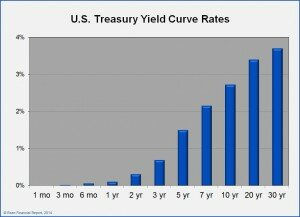Finding Green Dividend Yield
by Harris Roen, Editor
Roen Financial Report
 February 14, 2014
February 14, 2014
In the vexing world of low interest rates that we now live in, a promising realm is opening up to alternative energy investors. Two recent IPOs have broadened the dividend investment field for green investors, Hannon Armstrong Sustainable Infrastructure (HASI) and Pattern Energy Group Inc (PEGI). Though these two green companies operate in very different business areas, they both offer promising income investing opportunities.
Hannon Armstrong Sustainable Infrastructure
What HASI Does
Hannon Armstrong’s core business is to make debt and equity investments in sustainable infrastructure projects. Essentially a financial company, their mission is to focus on profitable projects that increase energy efficiency, provide cleaner power, have a positive impact the environment, and/or make more efficient use of natural resources. For example, HASI brought in $400 million in construction loans for a utility-scale geothermal project in California.
Yield and Other Financials
Hannon Armstrong currently offers a dividend of $0.88 per share, which translates to an impressive yield around 6.7%. Revenues are relatively small for this newly traded company, around $18 million. However, income has been growing fast, about triple what it was 5 years ago. Having said that, profits are still in the red, with five out of the past eight quarters showing negative earnings.
Overall, this IPO has been successful. The stock is up around 20% since its debut in April 2014.
Pattern Energy Group
What PEGI Does
Pattern Energy Group is an independent power company that operates 10 wind-generating facilities in the United States, Canada and Chile. PEGI essentially acts as a utility with the capacity to sell 1.2 gigawatts of clean wind power. This diverse portfolio of wind projects has been vetted by management for stable long-term cash flows, best technologies and strong growth potential. Pattern Energy Group sells 95% of its electricity generated via long-term, fixed-price power sale agreements.
Yield and Other Financials
PEGI also offers a robust dividend of 1.25 per share, resulting in a yield around 4.6%. Sales have also been strong for PEGI, about three times higher now than they were in 2010. Earnings per share have been razor thin, but are currently in positive territory. This stock has also made descent gains since its IPO around 5 months ago, up 16%.
Investment Prospects For HASI and PEGI
Since both HASI and PEGI are relatively new issues, it helps to look at some ratios to get a handle on their financial health. The charts below graph these two companies in relation to 13 other high yielding alternative energy stocks. For this analysis, I chose companies that are in what I consider the sweet spot of yield investing, between 3.5% and 7%. For comparison, the black line on each chart shows the median of over 600 stocks in that same yield range.
The price/sales and price/book ratios can reflect how efficiently the stocks are priced. All other things being equal, the lower these ratios the better.
Both HASI and PEGI are above the median range in price/sales. This is especially true for Hannon Armstrong, which is four times the median number. HASI has some heavy lifting ahead to ramp up its revenue numbers, but at least the sales growth trajectory is in the right direction.

When looking at price/book ratios, high yielding alternative energy stocks are more in line with the overall median of all high-yield companies. HASI has an attractive price/book ratio in this comparison.
Return on equity (ROE) shows how efficiently a company is using its financial resources. Though this number is more useful when averaged over a number of years, it is still instructive to see that ROE is right about average for PEGI, but is somewhat lacking for HASI. Having said that, an interesting analysis and follow-up by one of my colleagues at Forbes suggests that Hannon Armstrong is undervalued at current levels when looking at its debt/equity ratio. And even though HASI is not yet making a profit, a consensus of analyst estimates projects it to be in the black by in 2014.
In sum, both these companies have sound business models that are being capably executed. Furthermore, as the demand for “green” income investing expands, which I think it will, that interest alone should help buoy the price of these stocks. I think both these stocks are good income producing prospects as part of a balanced portfolio.
IMPORTANT INFORMATION
Individuals involved with the Roen Financial Report and Swiftwood Press LLC do not own or control shares of any companies mentioned in this article. It is also possible that individuals may own or control shares of one or more of the underlying securities contained in the Mutual Funds or Exchange Traded Funds mentioned in this article. Any advice and/or recommendations made in this article are of a general nature and are not to be considered specific investment advice. Individuals should seek advice from their investment professional before making any important financial decisions. See Terms of Use for more information.
Remember to always consult with your investment professional before making important financial decisions.




[...] Finding Green Dividend Yield [...]
[...] Originally published on Roen Report. By Harris Roen. [...]